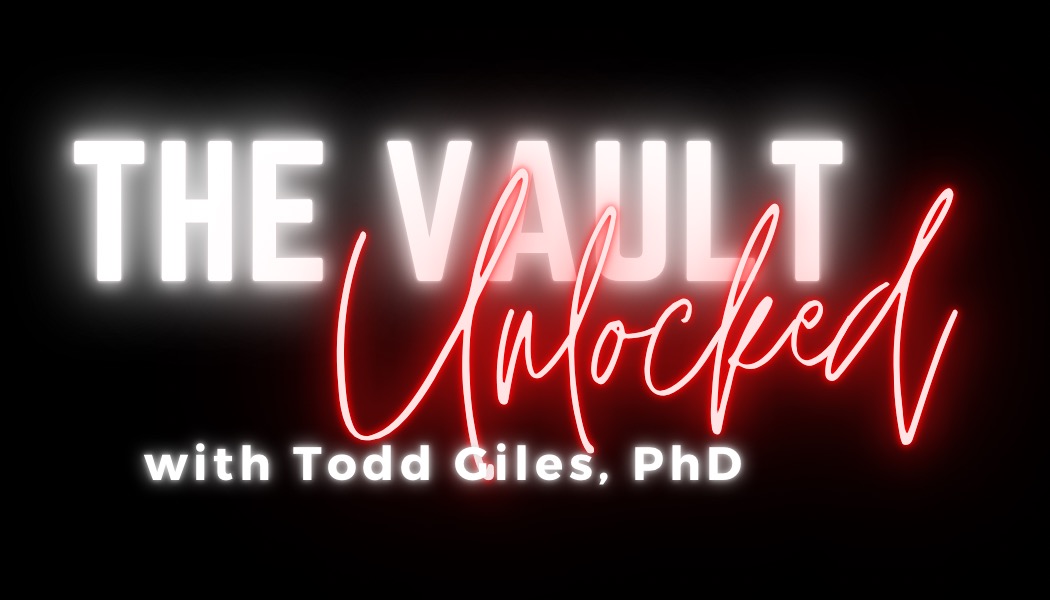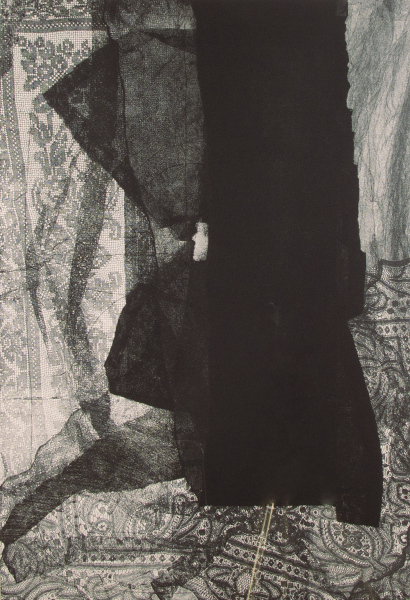
Ever wonder where the art is stored at the WFMA, and what's in there anyway? Join MSU professor Todd Giles as he unlocks the vault!

Louise Nevelson
Essences #6, 1977
Intaglio
Museum purchase, 1978
“My God, what energy! She reveled in the inks and papers. She threw down textures of fabrics, worked with enormous physicality, literally throwing herself into her work. The most lasting impression was that she got dirty. I mean very dirty. It was as is she enjoyed wallowing in the blackness.”
~ Alan Gussow, apprentice, Atelier 17 (1952–1953)
Although primarily known for her large assemblages composed of junkshop materials and other found objects, Louise Nevelson was also a groundbreaking post-World War II printmaker. A Russian-born émigré, Nevelson worked with paper before most of her Abstract Expressionist contemporaries ever considered doing so. A notable exception is Jackson Pollock, who produced eleven intaglio images at Stanley Hayter’s New York studio, Atelier 17, in 1944–54. Nevelson in turn made her first prints at Atelier 17 as early as 1947, continuing on through the early 1950s to complete a further thirty editions. She also worked at Hollander Graphic Workshop in New York and Tamarind Lithography Workshop in California.
Essences #6 is a single-tone, soft-ground etching produced in an edition of thirty in 1977 for Pace Editions in New York. By pressing woven fabrics into a softground, Nevelson was able to compose unique textures with a richness and depth of layering not found in the prints of her contemporaries. The only real comparison is with Robert Rauschenberg, who also used found objects and layered images in his prints—though his are not wholly abstract; they are very historically, culturally and politically charged, whereas Nevelson’s appear (at the risk of gendering her work) more delicate, intimate, and feminine. In other words, her prints read more tactile, familiar, and domestic than the overlapping pop culture prints of Rauschenberg.
To create the unique sense of depth and space in her printerly collage Essences #6, Nevelson combined the patterns from at least three delicate, broadly-woven lace fabrics of varying thickness and weave—some nearly transparent, others more opaque, gauze-like—with light hand tool-etched gestures, the product of which is truly the essence of the original fabrics, the traces of their design, if you will; the shadow of their overlappings and interminglings.
As was the case with some of her Abstract Expressionist colleagues working at the time such as Robert Motherwell, Philip Guston, and Pollock, Nevelson preferred using black ink with her prints. In a taped conversation with Diana MacKown in 1976, Nevelson expressed her relationship with the color black, saying, “When I fell in love with black, it contained all color. It wasn’t a negation of color. It was an acceptance. Because black encompasses all colors. Black is the most aristocratic color of all. . . . You can be quiet and it contains the whole thing. There is no color that will give you the feeling of totality. Of peace. Of greatness. Of quietness. Of excitement” (126).
Works Consulted
Acton, David. “Abstract Expressionist Prints at Tamarind.” Tamarind: Forty Years. Ed. Marjorie Devon. Albuquerque: U of New Mexico P, 2000. 5-35.
Acton, David. Stamp of Impulse: Abstract Expressionist Prints. MA: Worcester Art Museum, 2001.
Lisle, Laurie. Louise Nevelson: A Passionate Life. New York: Summit Books, 1990.
Nevelson, Louise. Dawns and Dusks: Taped Conversations with Diana MacKown. Encore Editions, 1980.
Essences #6 from the Permanent Collection of the Wichita Falls Museum of Art at MSU Texas
View Previous The Vault Unlocked
-
Tuesday - Friday
10:00AM - 5:00PMSaturday
1:00PM - 5:00PM